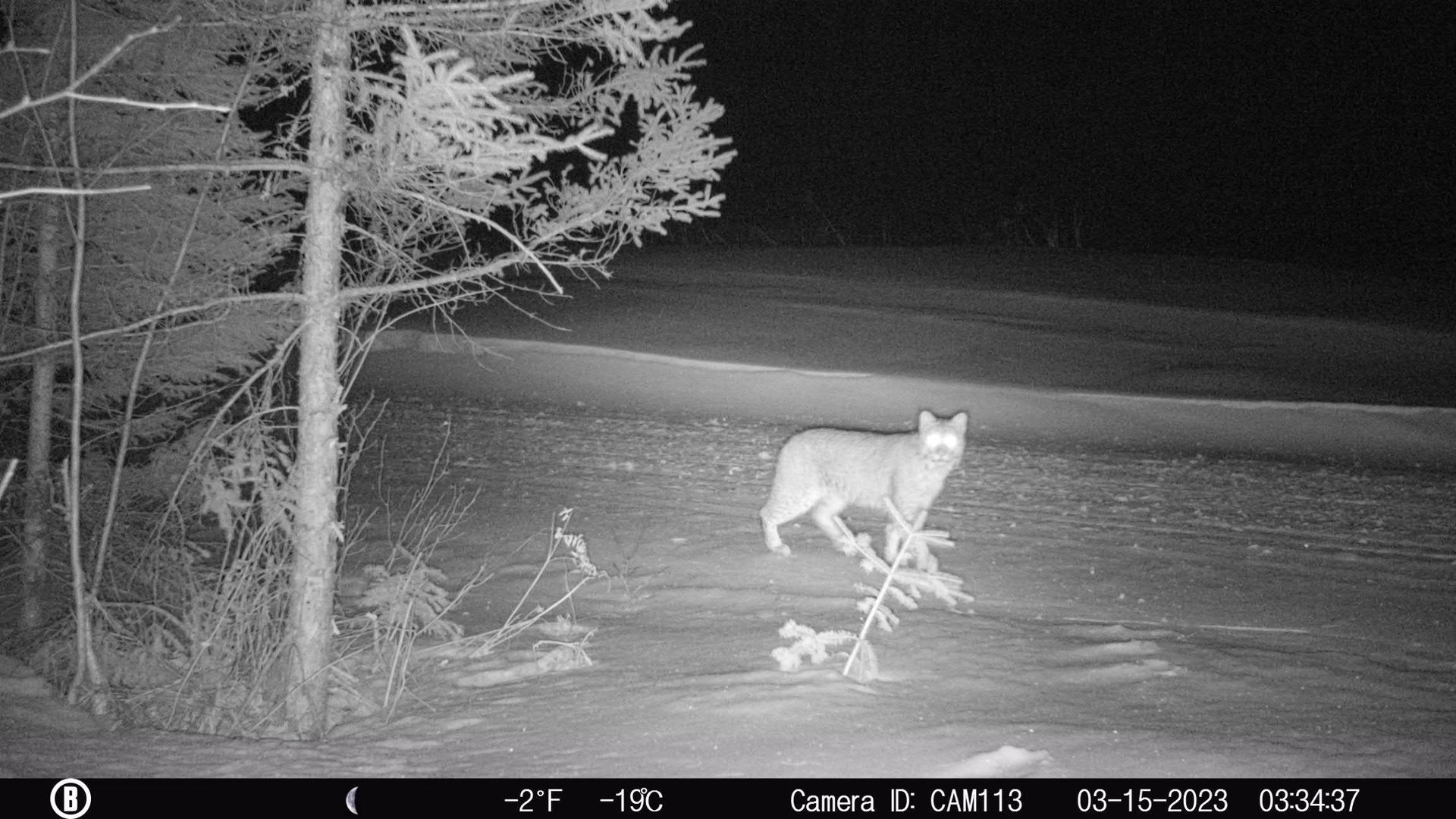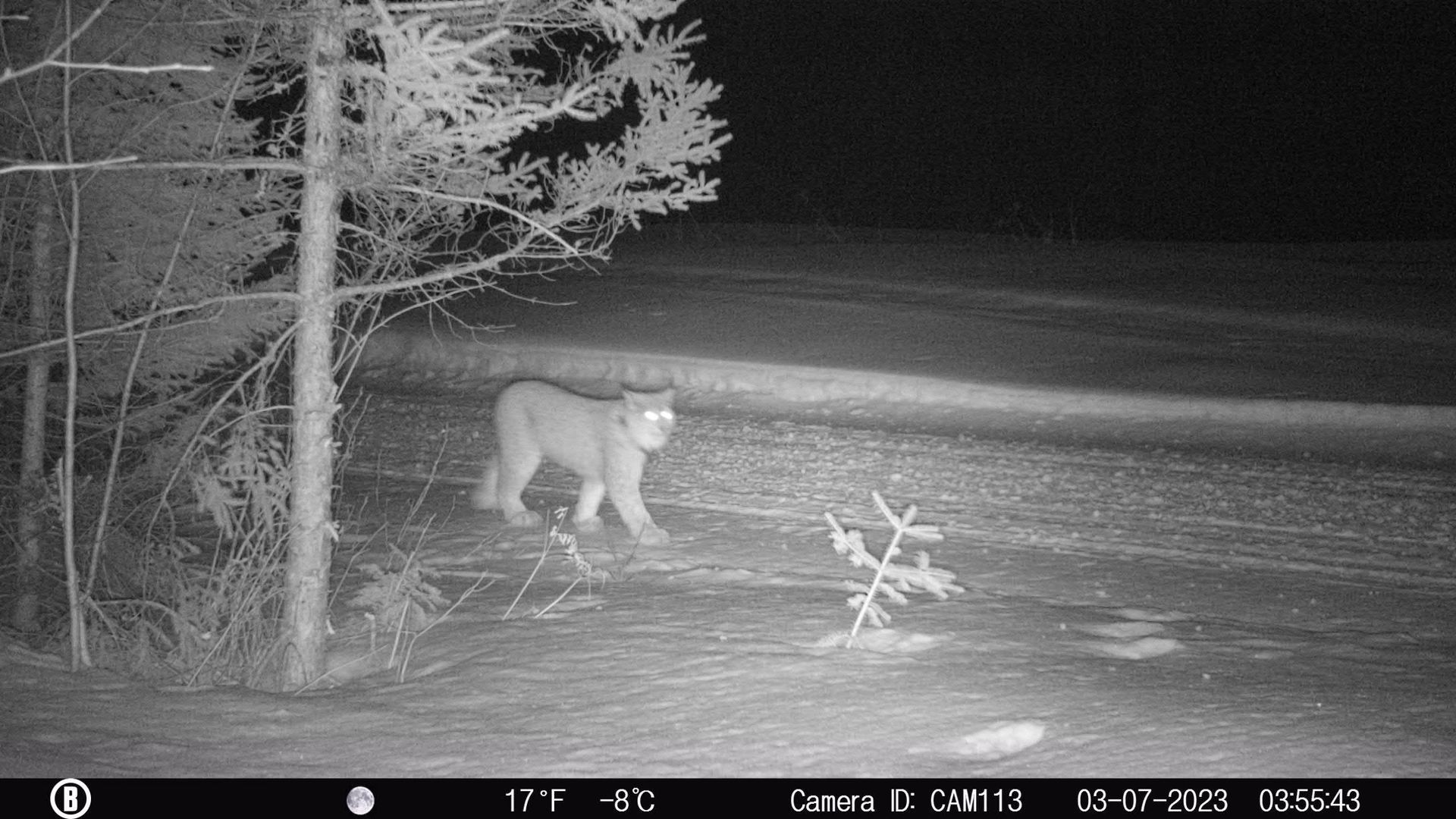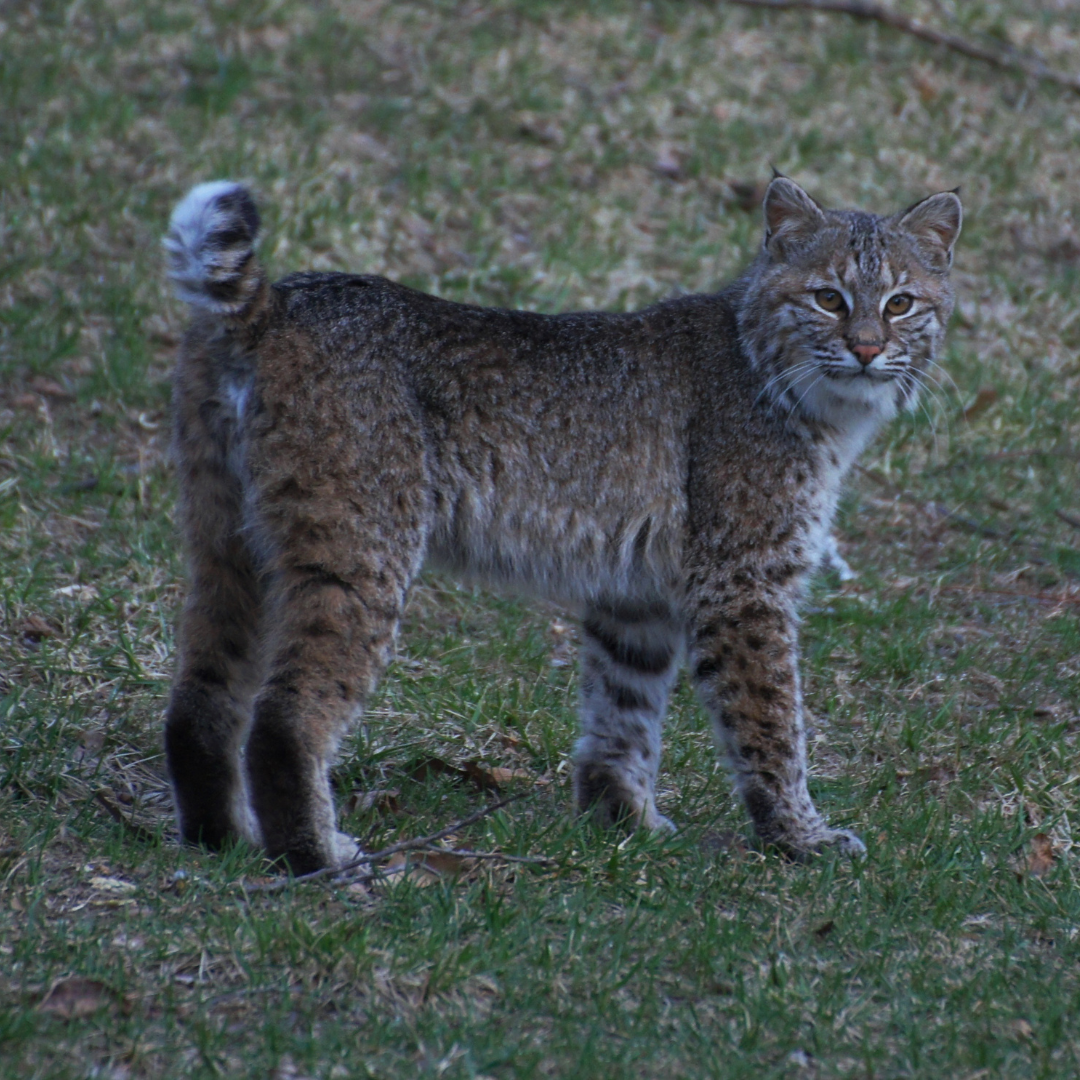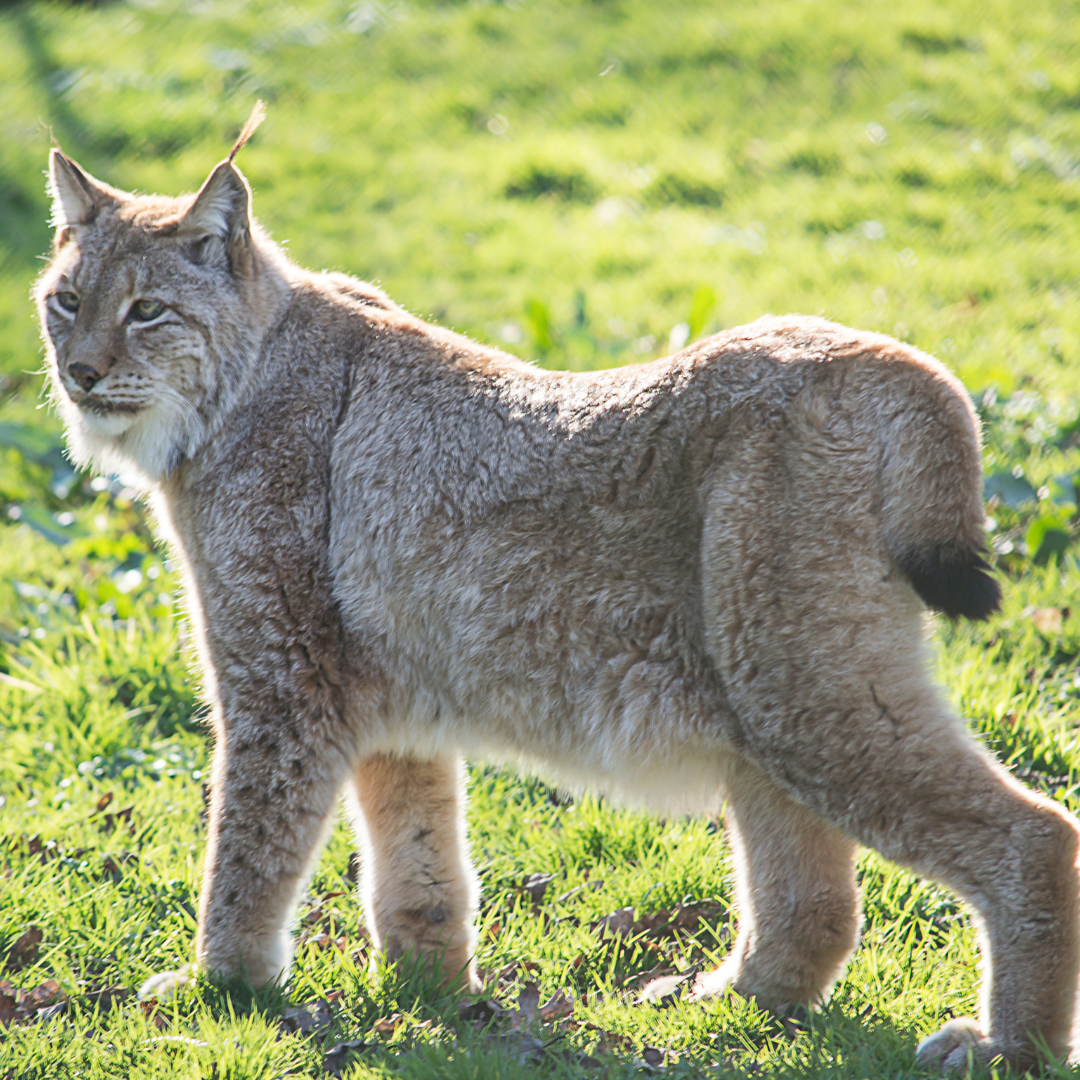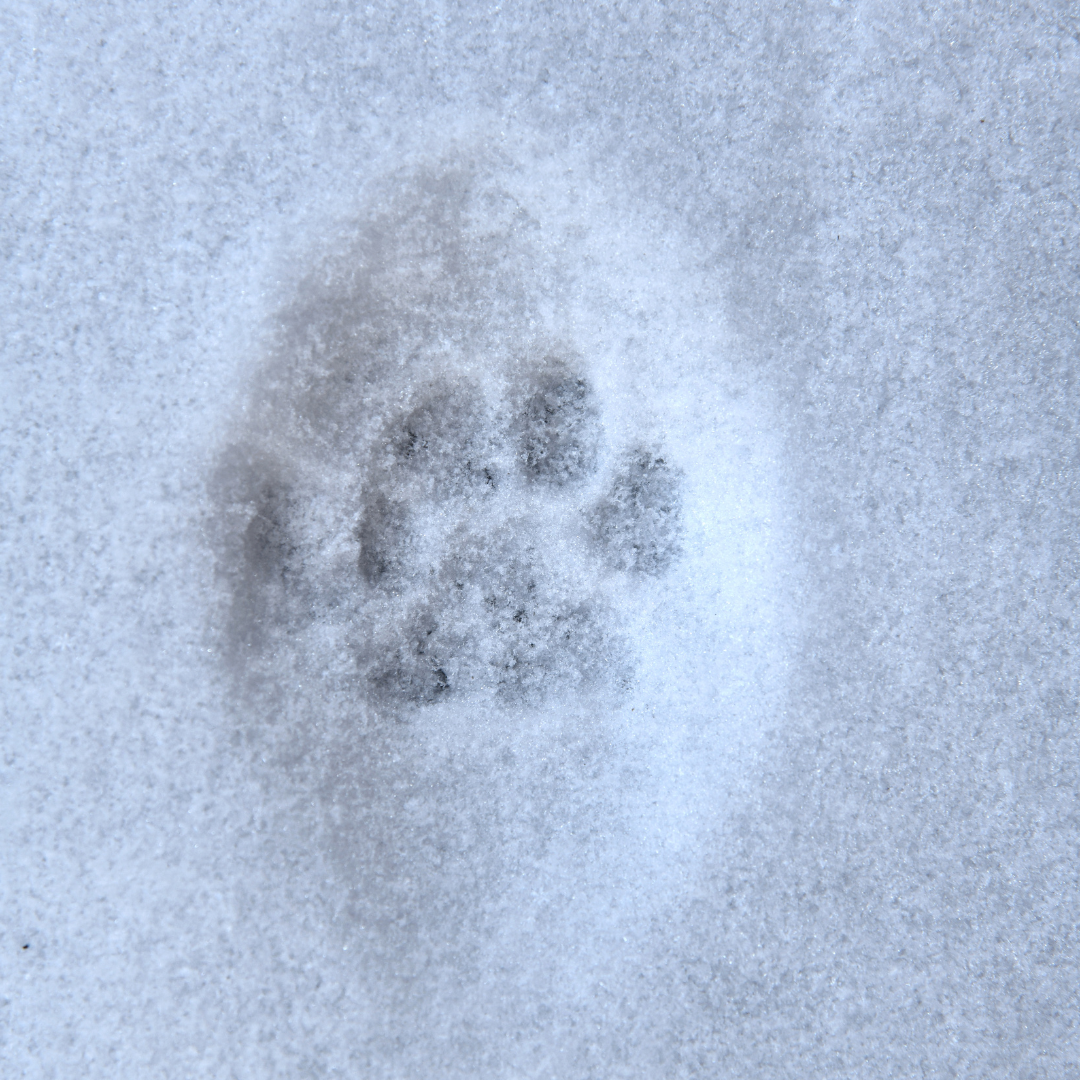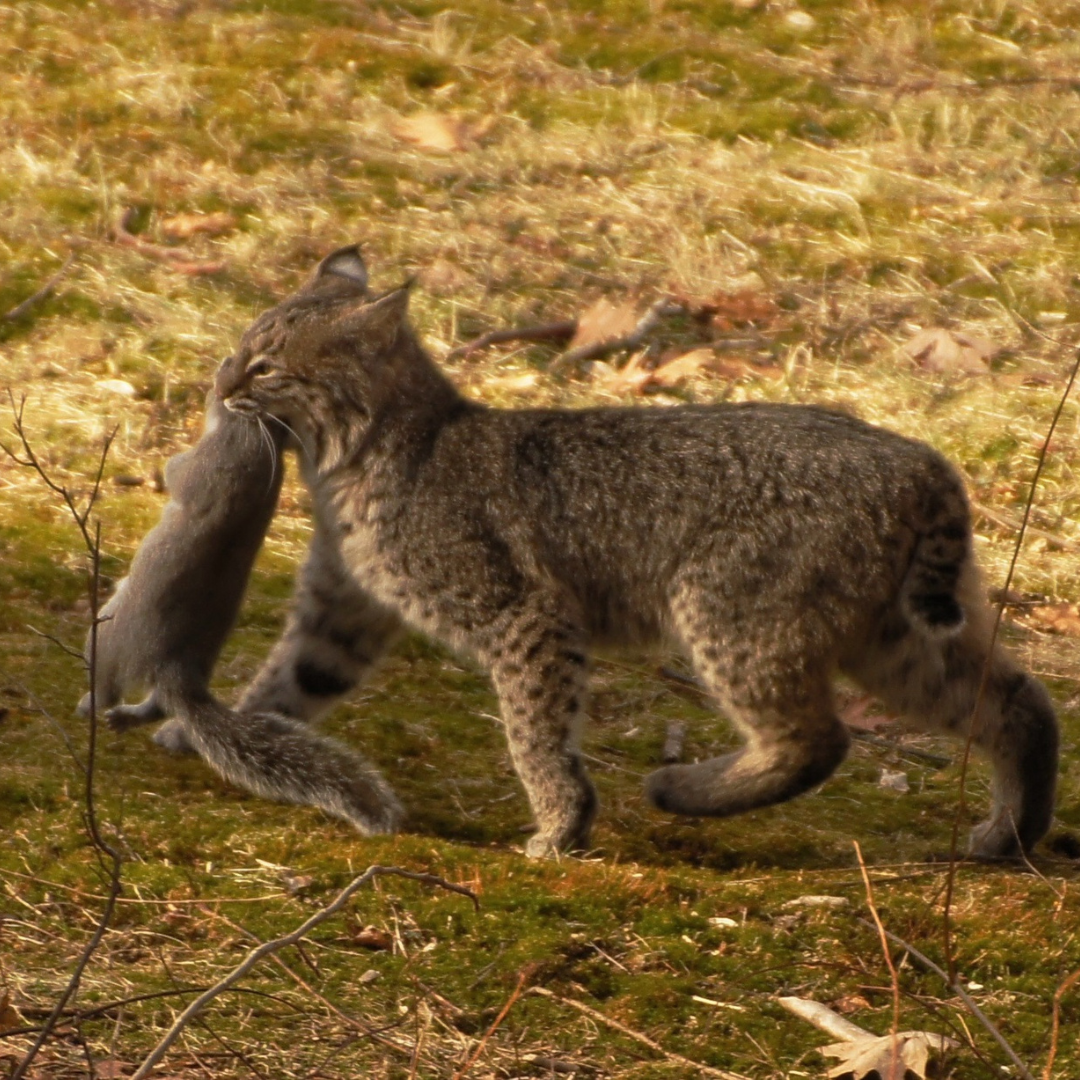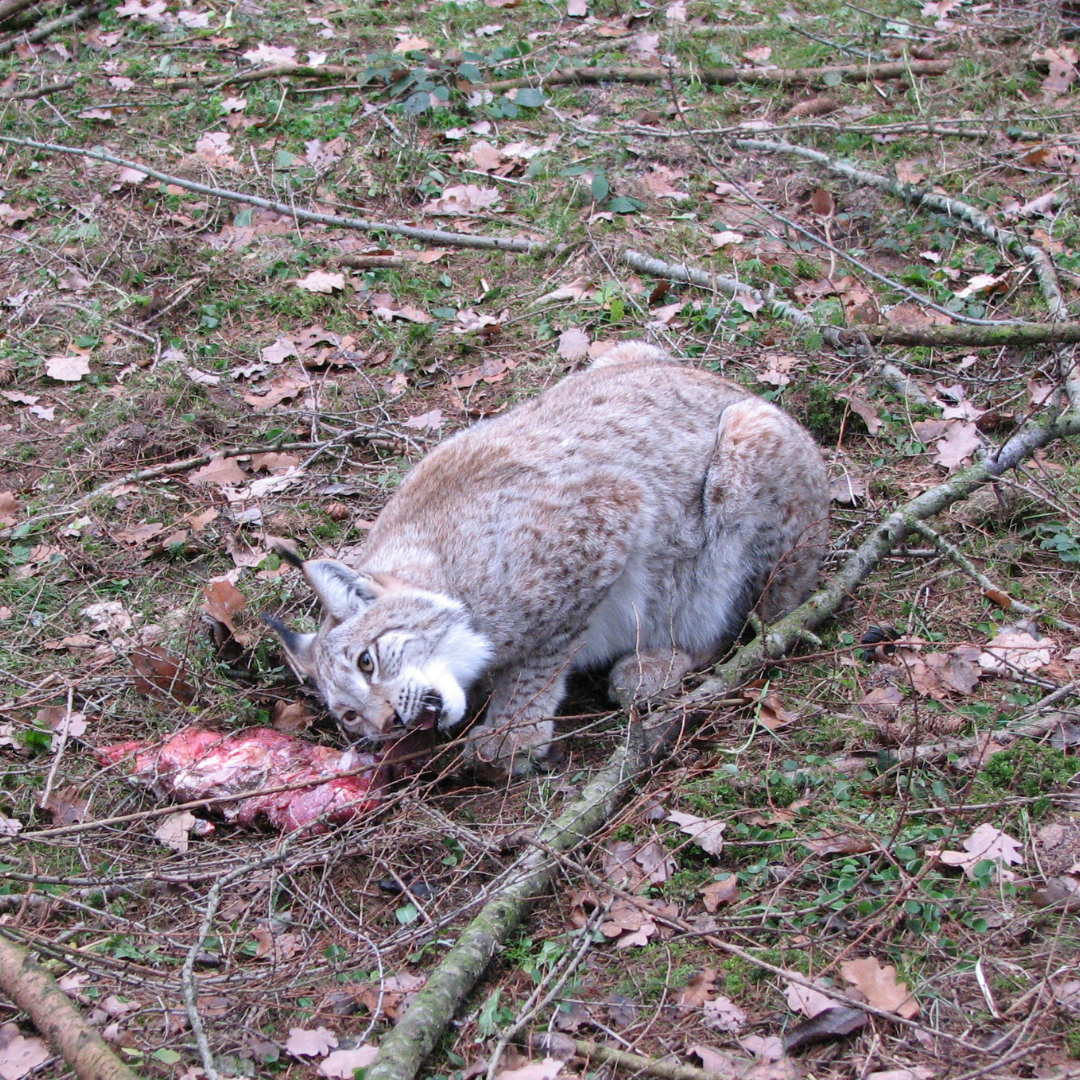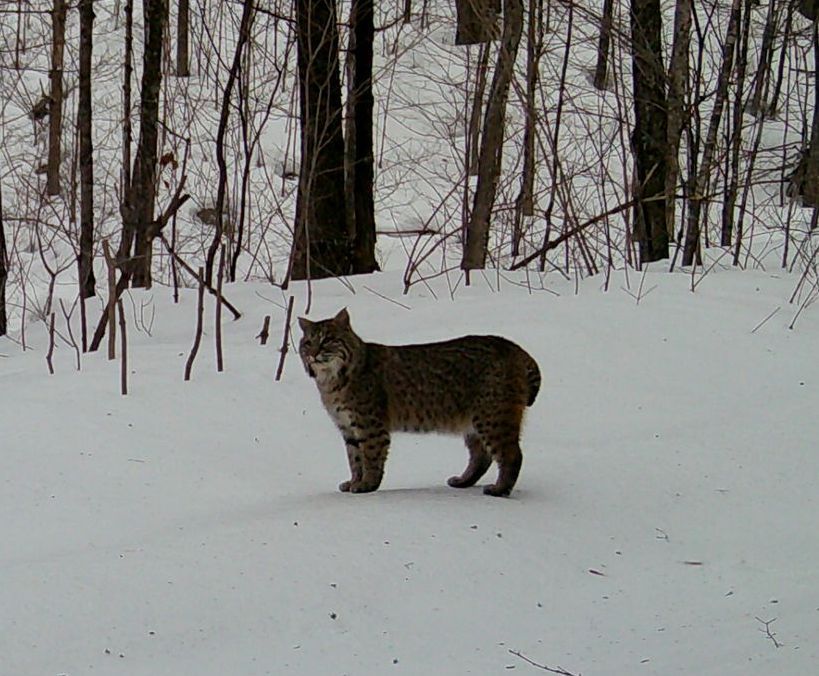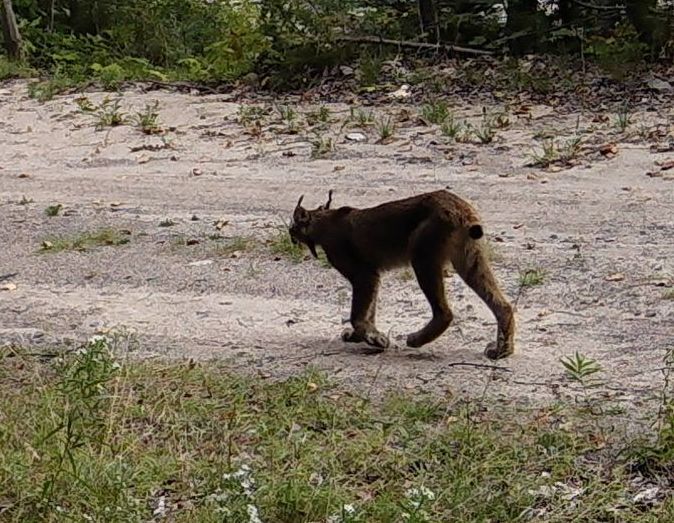Wildlife Research Project
Passage and Presence: Bobcat & Lynx
In the enigmatic world of Algoma’s felines, two cats stand out for their elusive nature and striking appearances: the bobcat and the Canada lynx. Despite their similarities, bobcats and lynxes represent distinct species belonging to the
Lynx genus. Within this genus are four unique species: the Eurasian lynx, the Iberian/Spanish lynx, and the Canadian lynx. The fourth member of this group is the widely recognized bobcat, which happens to be the most prevalent wild cat native to North America.
Trail cameras deployed in our Gladstone study site captured a bobcat and Canada lynx 8 days apart. Note the similar timestamps!
Much like the comparison made between wolves and coyotes in our previous blog, we'll embark on a journey to explore the key differences and intriguing similarities between the resident felines who reside within our study sites.
Appearance
When it comes to telling bobcats and Canada lynxes apart, size is a great place to start. Bobcats, often described as oversized house cats, are the smaller of the two. They usually stand at about 22 inches at the shoulder, have legs of equal length and weigh between 12 to 33 pounds. In contrast, Canada lynxes can be a bit larger, reaching up to 24 inches at the shoulder, have longer hind legs longer than front, and weigh between 18 to 38 pounds.
These wildcats share common features too. Both have those distinctive black tufts of hair on the tips of their ears and coats ranging from tawny to lighter shades, adorned with dark markings. However, there are some noticeable differences. Bobcats sport shorter ear tufts and tend to have more prominently visible spots on their coats, making them resemble your typical tabby on steroids. On the other hand, Canada lynxes flaunt longer ear tufts and have lighter coats with more understated markings, making them appear more regal.
But the most unmistakable feature? The tip of their tails! The tip of a Bobcat's tail is black on top and white underneath, while the Canada lynx has an entirely black tip.
To some, compared to lynx, bobcats closely resemble larger, robust domestic cats.
Tracks
Paws are another aspect that sets bobcats and Canada lynx apart. Bobcats have relatively smaller paws, which are adapted for their specific hunting and movement needs. These tracks present similar to a domestic cat – round and compressed. In contrast, Canada lynxes have large paws with fur-padded undersides, perfect for navigating deep snow without sinking in. Relative to their overall track size, lynx have small toe and plantar pad imprints surrounded by visible fur impressions.
| Front Foot (Inches) | Hind Foot (Inches) | |
|---|---|---|
| Bobcat | 1 ⁵/⁸ to 2 ¹/² long by 1 ¹/² to 2 ³/⁸ wide | 1³/⁴ to 2¹/⁵ long by 1¹/² to 2⁵/⁶ wide |
| Canada Lynx | 3¹/⁴ to 3 ³/⁴ long by 3 to 3³/⁸ wide | 3¹/⁴ to 3³/⁴ long by 3 to 3³/⁸ wide |
Bobcat tracks are smaller and more compact compared to the Canada lynx.
Habitat & Prey
Bobcats are known as the true survivors. They are highly adaptable and can be found in a wide range of habitats, from deserts and swamps to forests and urban areas. Their versatility allows them to thrive in diverse ecosystems across North America. When it comes to food, bobcats are opportunistic hunters. They prey on a variety of small creatures, including birds, rabbits, squirrels, and rodents. On rare occasions (usually in winter months when small critters are challenging to find) bobcats have even been known to target deer – but not without a fight!
Canada lynx, on the other hand, have a more specialized habitat and diet. These wildcats are often associated with boreal forests, dense woodlands, and areas with deep snow cover. They have evolved to be snow specialists, relying on their unique adaptations to thrive in snowy environments. The deep snow, in fact, can work in their favour by slowing down their prey. Their primary source of sustenance is the snowshoe hare. In fact, these hares make up the majority of their diet. Canada lynx have coevolved with snowshoe hares, and the rise and fall of hare populations directly influence lynx numbers.
Despite their difference in size, bobcats and Canada lynxes share some overlap in their prey.
Reproduction
Both species of wildcat engage in seasonal breeding, with the peak of their reproductive activity occurring in late winter and early spring. Moreover, both bobcats and lynx experience a gestation period lasting approximately 60 to 70 days, ensuring that their young are born during favourable environmental conditions.
However, differences emerge when delving into the details of litter size. Bobcats generally have smaller litters, typically consisting of 2 to 4 kittens, although instances of up to 6 kittens have been recorded. Bobcat kittens are born blind and rely on their mothers for protection and nourishment. In contrast, Canada lynx tend to have larger litters, ranging from 1 to 8 kittens, with 3 kittens being more common. Like bobcats, lynx kittens are born blind and gradually open their eyes at around 10 to 17 days of age. Both species provide extensive maternal care, weaning their young at about 2 to 3 months of age and introducing them to solid food.
Encounters in the Wild
The possibility of spotting a bobcat or Canada lynx in the wild without trail cameras varies significantly due to several crucial factors. For bobcats, their adaptable nature and widespread distribution across a range of environments, including forests, swamps, and even urban areas, increase the chances of encountering them. However, their predominantly crepuscular (active dusk/dawn) behaviour and solitary nature make them elusive and challenging to observe. Bobcats tend to avoid human presence, further reducing the likelihood of sightings. While they might occasionally venture out during the day in search of prey, these encounters remain relatively rare.
Footage captured by our trail cams offer a unique, untainted look into the mysterious lives of Algoma's wildcats.
Conversely, Canada lynx have a more specialized habitat, primarily occupying boreal forests, dense woodlands, and areas with deep snow cover. Like bobcats, they are predominantly crepuscular, adding to their elusiveness. As previously stated, the presence of Canada lynx is closely tied to the cyclical population dynamics of snowshoe hares, which influences the population and distribution of the wildcats. This unique relationship and their ability to thrive in snowy terrains without being easily detected result in encounters with Canada lynx being quite rare, often requiring visits to their specialized habitats during twilight hours or good fortune during peak snowshoe hare seasons.
In summary, while both bobcats and Canada lynx are captivating wildcats, the chances of encountering them in the wild are relatively low. Understanding their identifying features, tracks, specialized habitats, and crepuscular habits can enhance the possibility of witnessing these creatures, but such encounters remain exceptional and infrequent.
This piece was developed as part of our Wildlife Research Project.
Our project is made possible thanks to a passionate group of volunteers and collaborative partners.
You can learn more about our partners here.


